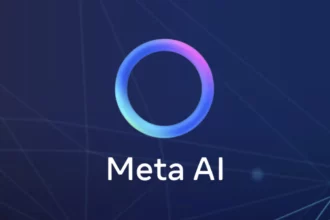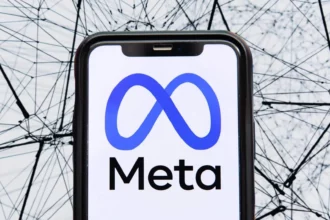Top Small LLMs Comparison
When it comes to selecting the best small Language Model (LLM), it’s important to consider the performance and efficiency of these models, especially when they have less than 7 billion parameters. In the latest comparison of small LLMs, two standout models have caught the attention of experts: Phi-2 from Microsoft and TinyLLama.
Phi-2 from Microsoft has emerged as the current winner with just 2.7 billion parameters. This model showcases how advancements in complex training techniques are enabling the development of highly capable models with fewer parameters, emphasizing that size is not the only factor to consider when evaluating LLMs.
TinyLLama, on the other hand, utilizes the innovative Chinchilla paper principle along with cutting-edge training techniques to create a compact yet powerful model. This project is a testament to how custom training methods can significantly impact a model’s performance and effectiveness.
It’s crucial to note that while size plays a role in determining an LLM’s performance, specialized training techniques and unique methodologies are increasingly influencing the capabilities of smaller models. As technology continues to evolve, so do the possibilities for creating efficient and high-performing small LLMs.
In your quest for choosing the best mini LLM for your needs, understanding these nuances in model development and performance is key. Stay informed about recent advancements in LLM technology to make educated decisions tailored to your specific requirements.
To delve deeper into this topic and explore more insights on small LLMs, continue reading further sections.
Table of Contents
TogglePerformance Analysis of Small LLMs
In the realm of language models, analyzing the performance of small Language Models (LLMs) plays a crucial role in determining their effectiveness and efficiency. While there is a common notion that larger models equate to better performance, recent advancements challenge this belief. OpenAI’s scaling law suggests that as model size increases, performance improves. However, innovative training techniques and alternative architectures have defied this notion by achieving impressive results with smaller LLMs. Strategies like the “mixture of experts” approach and leveraging sparsity in models are showing promise in enhancing efficiency despite current hardware limitations and challenges in implementing certain techniques on larger models.
Understanding these dynamics underscores the significance of pursuing smaller yet more efficient LLMs. By balancing scaling and optimizing efficiency at reduced sizes, the future landscape of AI development can witness significant progress. Embracing advancements that enable high-performing small LLMs could open doors to enhanced capabilities in various applications requiring adaptability and speed.
Fact: Despite their smaller size, some small LLMs outperform larger models through specialized training techniques and unique architectures tailored for efficiency.
Moving forward, exploring different models under 7 billion parameters like Phi-3 Mini from Microsoft or other competitive open-source options can provide valuable insights into the best performers among small language models. By comparing benchmarks and technical reports to assess their effectiveness across tasks such as natural language processing, coding support, summarization, or conversational interactions you can identify which model aligns best with your specific requirements.
Additionally, considering factors like cost-effectiveness where a smaller LLM might offer a smarter solution when benefits outweigh high-end model expenses is essential. Quality isn’t solely defined by size; therefore reflecting on user preferences coupled with performance standards holds significance when selecting the right small LLM for your needs.
Keeping a pulse on emerging trends in LLM technology will help stay informed about innovative methodologies shaping the landscape of efficient and high-performing language models. Whether it’s for AI customer service, real-time data analysis or specialized applications with particular vocabularies – choosing a small LLM proficiently aligned with your requirements is key to maximizing its potential impact in diverse use cases.
Criteria for Evaluating Small LLMs
When it comes to evaluating small Language Models (LLMs), several key criteria play a significant role in determining their performance and effectiveness. The most common metrics used for LLM evaluation include relevance, hallucinations, question-answering accuracy, toxicity, and retrieval-specific metrics. Each of these criteria provides valuable insights into different aspects of an LLM’s capabilities based on the specific tasks it is designed to perform.
Evaluating an LLM model involves measuring its ability to generate accurate, coherent, and contextually appropriate responses across various benchmark tasks. These tasks typically cover language generation, translation, reasoning, summarization, question-answering, and relevance assessments. One crucial benchmark for evaluating small LLMs is their ability to apply logic and everyday knowledge in problem-solving scenarios. Additionally, assessing language understanding and question-answering accuracy are essential aspects that determine the overall performance of a model.
When evaluating your LLM model’s performance against these benchmarks, it’s essential to use predefined evaluation metrics tailored to each task. By carefully analyzing how well the model interprets text and responds to questions accurately, you can gauge its effectiveness in meeting the desired objectives.
Fact: Evaluating small LLMs involves assessing their ability to generate coherent responses across various tasks such as reasoning, language understanding, and question answering.
Emerging Trends in Small LLM Training Techniques
EmeRging Trends in Small LLM Training Techniques
In the realm of Language Model (LLM) training techniques, recent advancements have shed light on the intricate relationship between model size and performance. While OpenAI’s proposed LLM scaling law suggests a performance boost with larger models, innovative training methods and alternative architectures are challenging this notion. Strategies like the “mixture of experts” approach and leveraging sparsity in LLMs have emerged as promising avenues to enhance efficiency.
Despite current hardware limitations and challenges in implementing techniques like quantization and knowledge distillation on larger models, there is a growing emphasis on pursuing smaller yet more efficient models. Balancing scalability with improved efficiency at reduced sizes holds significant potential for the future of AI development.
Recent studies highlight that smaller language models can be fine-tuned to achieve competitive or even superior performance compared to their larger counterparts in specific tasks. For instance, research has shown that distilling knowledge from larger LLMs into smaller models can result in similar performance with significantly fewer computational resources required.
Moreover, techniques like transfer learning have enabled smaller models to leverage pre-existing knowledge effectively, leading to breakthroughs in applications such as sentiment analysis, translation, and summarization. In some cases, smaller models have demonstrated comparable or even better performance than traditional large-scale LLMs.
Fact: Distilling knowledge from large Language Models (LLMs) into smaller models can result in similar performance with significantly fewer computational resources required.
- Phi-2 from Microsoft and TinyLLama are standout small LLMs in the latest comparison.
- Phi-2 from Microsoft, with 2.7 billion parameters, is currently leading the pack in small LLM performance.
- TinyLLama utilizes innovative training techniques like the Chinchilla paper principle to create a compact yet powerful model.
- Size is not the only factor to consider when evaluating small LLMs; specialized training techniques and unique methodologies play a significant role.
- Advancements in complex training techniques are enabling the development of highly capable small LLMs with fewer parameters.
- Stay informed about recent advancements in LLM technology to make educated decisions tailored to your specific requirements.




